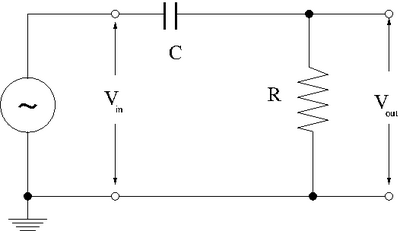Difference between revisions of "Lab 4 RS"
Jump to navigation
Jump to search
| Line 27: | Line 27: | ||
4. Measure the input and output voltages for at least 8 different frequencies which span the frequency range from 1 Hz to 1 MHz. | 4. Measure the input and output voltages for at least 8 different frequencies which span the frequency range from 1 Hz to 1 MHz. | ||
| − | {| border=" | + | |
| − | | | + | {| border="1" cellspacing="0" style="text-align: center; width: 500px; height: 500px;" |
| + | |+ '''Table1. Voltage gain vs. frequency measurements''' | ||
|- | |- | ||
| − | | | + | ! scope="col" width="50" | <math>\nu\ [\mbox{kHz}]</math> |
| + | ! scope="col" width="50" | <math>V_{in}\ [V]</math> | ||
| + | ! scope="col" width="50" | <math>V_{out}\ [V]</math> | ||
| + | ! scope="col" width="50" | <math>\frac{V_{out}}{V_{in}}</math> | ||
|- | |- | ||
| − | | | + | |0.1 || || || |
|- | |- | ||
| − | | | + | |1.0 || || || |
|- | |- | ||
| − | | | + | |2.0 || || || |
|- | |- | ||
| − | | | + | |3.0 || || || |
|- | |- | ||
| − | | | + | |4.0 || || || |
|- | |- | ||
| − | | | + | |5.0 || || || |
|- | |- | ||
| − | | | + | |6.0 || || || |
|- | |- | ||
| − | | | + | |7.0 || || || |
|- | |- | ||
| − | | | + | |8.0 || || || |
|- | |- | ||
| − | | | + | |9.0 || || || |
|- | |- | ||
| − | | | + | |10.0 || || || |
|- | |- | ||
| − | | | + | |11.0 || || || |
|- | |- | ||
| + | |12.0 || || || | ||
| + | |- | ||
| + | |15.0 || || || | ||
| + | |- | ||
| + | |20.0 || || || | ||
| + | |- | ||
| + | |30.0 || || || | ||
| + | |- | ||
| + | |40.0 || || || | ||
| + | |- | ||
| + | |50.0 || || || | ||
| + | |- | ||
| + | |100.0 || || || | ||
| + | |- | ||
| + | |200.0 || || || | ||
|} | |} | ||
Revision as of 05:27, 26 January 2011
- RC High-pass filter
1-50 kHz filter (20 pnts)
1. Design a high-pass RC filter with a break point between 1-50 kHz. The break point is the frequency at which the filter's attenuation of the AC signal goes to 0(not passed). For a High pass filter, AC signals with a frequency below the 1-50 kHz range will be attenuated .
- To design low-pass RC filter I had:
So
2. Now construct the circuit using a non-polar capacitor.
3. Use a sinusoidal variable frequency oscillator to provide an input voltage to your filter.
4. Measure the input and output voltages for at least 8 different frequencies which span the frequency range from 1 Hz to 1 MHz.
| 0.1 | |||
| 1.0 | |||
| 2.0 | |||
| 3.0 | |||
| 4.0 | |||
| 5.0 | |||
| 6.0 | |||
| 7.0 | |||
| 8.0 | |||
| 9.0 | |||
| 10.0 | |||
| 11.0 | |||
| 12.0 | |||
| 15.0 | |||
| 20.0 | |||
| 30.0 | |||
| 40.0 | |||
| 50.0 | |||
| 100.0 | |||
| 200.0 |
5. Graph the -vs-
phase shift (10 pnts)
- measure the phase shift between and
Questions
- compare the theoretical and experimentally measured break frequencies. (5 pnts)
- Calculate and expression for as a function of , , and .(5 pnts)
- Compare the theoretical and experimental value for the phase shift . (5 pnts)
- Sketch the phasor diagram for ,, , and . Put the current along the real voltage axis. (30 pnts)
- what is the phase shift for a DC input and a very-high frequency input?(5 pnts)
- calculate and expression for the phase shift as a function of , , and graph -vs . (20 pnts)
Forest_Electronic_Instrumentation_and_Measurement
Go Back to All Lab Reports
